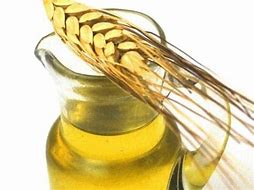










Babies ingest at least 10 times more microplastics than adults, study finds
Babies have almost 15 times the level of microplastics in their bodies than found in adults, a new study suggests.
Microplastics are less than 5mm in size and are often released into the environment and people’s homes from having broken off from a larger body of plastic objects or materials.
Researchers used mass spectrometry to measure the concentrations of PET (polyethylene terephthalate) and PC (polycarbonate) in faeces samples from six infants and 10 adults, as well as three samples of newborn babies’ first stools – in the study by the New York University School of Medicine.
In all samples, microplastic fibres were found. PC levels were about the same in adults and babies but the PET levels were about 14 times higher in babies.
Researchers believe that higher levels of PET in babies could be the result of babies’ exposure to products like dummies, and crawling on carpets that contain the chemicals.
© Getty/iStock : Nineteen samples of faeces were examined for microplastics, including those of newborn babies
-Lead author Professor Kurunthachalam Kannan said that children’s products should be made from safe materials other than plastic to reduce children’s exposure to microplastics.
He also said: “Although average levels of faecal PC microplastics were similar between adults and infants, infant stool contained, on average, more than 10 times higher PET concentrations than that of adults.
“High concentrations of microplastics in the faeces of one-year-old infants can be attributed to extensive use of plastic products/articles such as baby feeding bottles, sippy cups, utensils such as spoons and bowls, plastic teethers, and toys, among others, during that growth stage.
“One-year-old infants are known to frequently mouth plastic products and clothing.
“In addition, studies have shown that infant formula prepared in bottles can release millions of microplastics and many processed baby foods are packaged in plastic containers that constitute another source of exposure in one-year-old infants.
“Furthermore, textiles are a source of PET MPs (microplastics). Infants often chew and suck cloths, and therefore, exposure of this age group to MPs present in textiles is a greater concern.
“Carpets made of PET and PP (polypropylene) can be another source of MP exposure, as infants crawl on the carpeted surfaces frequently.”
Prof Kannan said that more research needs to be carried out as the study – involving just 19 samples – was very small.
The research is published in the American Chemical Society’s journal Environmental Science and Technology Letters.
Reference: Independent: Lamiat Sabin
- Nine things you must consider before adopting a child
- An Overview of Psoriasis in Children
- DIY Fertility Tests Are On The Rise, But How Reliable Are They?
- Dentist shares when children should stop using dummies - or risk bite issues
- Top 10 benefits of breastfeeding
- Reye's syndrome: The illness that affects children
- Diphtheria symptoms: Everything you need to know after case confirmed at UK school
- Children with 'prominent' forehead may in fact be suffering from a dangerous illness
- Study assesses links between early negative life events, orbitofrontal cortical thickness and depression in young adults
- Placenta tumour: My miracle baby gave me cancer
- 7 things to look out for when it comes to vaginal health, according to gynaecologists
- What is the vaginal microbiome?
- What every woman should know about hormones, the pill and cancer
- Doctors sound alarm over new infant fentanyl syndrome
- How to boost your child’s memory
- How to Teach Deaf Children to Read
- Speaking to babies in sing-song speech ‘helps them learn language’
- Enzyme therapy approved for rare genetic condition in babies
- Paris Hilton opens up about decision to have children via surrogate
- Urgent, gentle care: life on a neonatal unit
- Woman, 70, 'gives birth to twins after IVF treatment': Ugandan becomes the oldest person to give birth in Africa, hospital says
- Scarlet fever symptoms: What parents should look out for as UK cases surge by 70 per cent
- Vaccine to tackle bronchiolitis to be offered to children next year
- What is baby-led weaning?
- What are the symptoms of tonsillitis and how is it treated?
- Home
- Aches and Pains
- Children - Insomnia
- New Born Babies
- Babies From 2-12 months
- Spina Bifida
- Equipment Used
- Drug Abuse
- Other Ingredients
- The Handicapped Child
- Videos
- BALANITIS - Aromachildhood
- Worms
- Corona virus and pregnancy
- Contact Us
- Essential Oils for General Purposes
- The Methods - Aromatherapy - Children-2
- Hydrolats, Essential Oil Waters, and infused Oils
- Ringworm
- The Methods - Aromatherapy - Children- 3
- Basic Care Kit - Children - Essential Oils
- Web Links
- Acne
- Adolescent Acne
- The A - Z of Conditions
- Arthritis (juvenile Rheumatoid)
- Herbal Healing Infused Oils
- The Cave Man Eating Plan
- Things To Make For Your First Aid Cabinet
- The Basic Care Kit For Children
- Verrucas and Warts
- Caring Touch Massage
- The Methods - Aromatherapy - Children
- The Methods - Aromatherapy - Children - 4
- Athlete's Foot - 2
We have 60 guests and no members online







